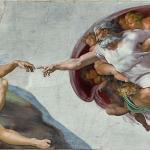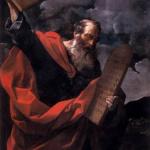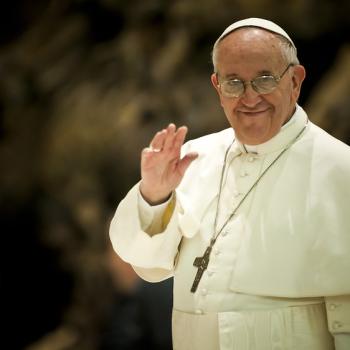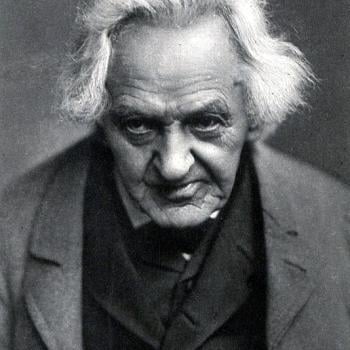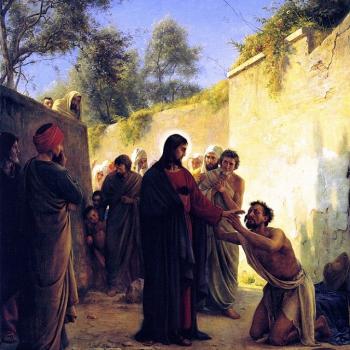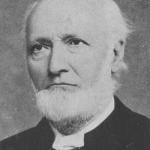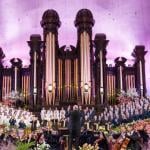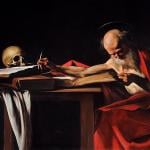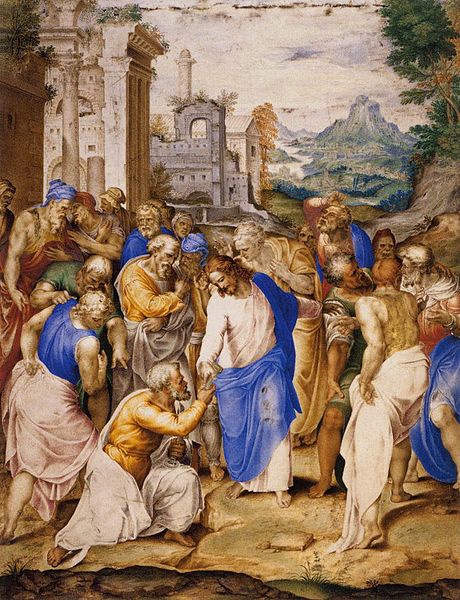
[see the Master List of all twelve installments]
Paolo Pasqualucci (signer of three of the endless reactionary-dominated “corrections” of Pope Francis), a Catholic and retired professor of philosophy of the law at the University of Perugia, Italy, wrote “‘Points of Rupture’ of the Second Vatican Council with the Tradition of the Church – A Synopsis” (4-13-18), hosted by the infamous reactionary site, One Peter Five. It’s an adaptation of the introduction to his book Unam Sanctam – A Study on Doctrinal Deviations in the Catholic Church of the 21st Century.
Pope Benedict XVI, writing as Cardinal Ratzinger, stated that the authority of Vatican II was identical to that of the Council of Trent:
It must be stated that Vatican II is upheld by the same authority as Vatican I and the Council of Trent, namely, the Pope and the College of Bishops in communion with him, and that also with regard to its contents, Vatican II is in the strictest continuity with both previous councils and incorporates their texts word for word in decisive points . . .
Whoever accepts Vatican II, as it has clearly expressed and understood itself, at the same time accepts the whole binding tradition of the Catholic Church, particularly also the two previous councils . . . It is likewise impossible to decide in favor of Trent and Vatican I but against Vatican II. Whoever denies Vatican II denies the authority that upholds the other two councils and thereby detaches them from their foundation. And this applies to the so-called ‘traditionalism,’ also in its extreme forms. Every partisan choice destroys the whole (the very history of the Church) which can exist only as an indivisible unity.
To defend the true tradition of the Church today means to defend the Council. It is our fault if we have at times provided a pretext (to the ‘right’ and ‘left’ alike) to view Vatican II as a ‘break’ and an abandonment of the tradition. There is, instead, a continuity that allows neither a return to the past nor a flight forward, neither anachronistic longings nor unjustified impatience. We must remain faithful to the today of the Church, not the yesterday or tomorrow. And this today of the Church is the documents of Vatican II, without reservations that amputate them and without arbitrariness that distorts them . . .
I see no future for a position that, out of principle, stubbornly renounces Vatican II. In fact in itself it is an illogical position. The point of departure for this tendency is, in fact, the strictest fidelity to the teaching particularly of Pius IX and Pius X and, still more fundamentally, of Vatican I and its definition of papal primacy. But why only popes up to Pius XII and not beyond? Is perhaps obedience to the Holy See divisible according to years or according to the nearness of a teaching to one’s own already-established convictions? (The Ratzinger Report, San Francisco: Ignatius, 1985, 28-29, 31)
For further basic information about the sublime authority of ecumenical councils and Vatican II in particular, see:
Conciliar Infallibility: Summary from Church Documents [6-5-98]
The Bible on Papal & Church Infallibility [5-16-06]
Authority and Infallibility of Councils (vs. Calvin #26) [8-25-09]
The Analogy of an Infallible Bible to an Infallible Church [11-6-05; rev. 7-25-15; published at National Catholic Register: 6-16-17]
“Reply to Calvin” #2: Infallible Church Authority [3-3-17]
“On Adhesion to the Second Vatican Council” (Msgr. Fernando Ocariz Braña, the current Prelate of Opus Dei, L’Osservatore Romano, 12-2-11; reprinted at Catholic Culture) [includes discussion of VCII supposedly being “only” a “pastoral council”]
Pope Benedict on “the hermeneutic of reform, of renewal within continuity” (12-22-05)
The words of Paolo Pasqualucci, from his article, noted above, will be in blue:
*****
5. The notion of the Church contained in the tortuous article 1 of the Dogmatic Constitution on the Church Lumen Gentium stands out [as different from the Tradition], presented as “a sacrament or as a sign and instrument both of a very closely knit union with God and of the unity of the whole human race,” without any mention of the supernatural end of the Church, that is the salvation of souls, the one thing that justifies her existence.
This is sheer nonsense. It’s as if Dr. Pasqualucci is reading a different document from the rest of us: seeing things in it that aren’t there, and not seeing what is in fact there. Words have to be interpreted in context: immediate context, context of the entire document, and the larger doctrine and Sacred Tradition of the Church.
Here is Chapter I, section 1. Highlighted in blue is the portion that Dr. Pasqualucci objects to. In green are the parts that precisely discuss what he claims is missing: the “supernatural end” or mission of the Church: “the salvation of souls”:
1. Christ is the Light of nations. Because this is so, this Sacred Synod gathered together in the Holy Spirit eagerly desires, by proclaiming the Gospel to every creature, (1) to bring the light of Christ to all men, a light brightly visible on the countenance of the Church. Since the Church is in Christ like a sacrament or as a sign and instrument both of a very closely knit union with God and of the unity of the whole human race, it desires now to unfold more fully to the faithful of the Church and to the whole world its own inner nature and universal mission. This it intends to do following faithfully the teaching of previous councils. The present-day conditions of the world add greater urgency to this work of the Church so that all men, joined more closely today by various social, technical and cultural ties, might also attain fuller unity in Christ.
Footnote:
1 Cf. Mk. 16:15.
Mark 16:15 (RSV) And he said to them, “Go into all the world and preach the gospel to the whole creation.”
I feel like that old commercial: “where’s the beef?” Didn’t he read the green-highlighted parts? How can he possibly make the claim that he does? In this case, the elements that he decries as not present are all over the place in the very same paragraph from which he chose one “objectionable” clause of one sentence. It’s like Twilight Zone . . .
Now I have to spend time (feeling quite silly at the necessity), searching the document for these elements that Dr. Pasqualucci doesn’t see, in his apparent blindness to the innumerable “pro-traditional” aspects of Lumen Gentium, and his seeming inability to exercise the extraordinary function of the word-search.
The word “salvation” appears in the document and its footnotes 44 times. I can’t and need not (for brevity’s sake) post all 44, but I will highlight the ones most relevant to this refutation:
Just as Christ carried out the work of redemption in poverty and persecution, so the Church is called to follow the same route that it might communicate the fruits of salvation to men. (Ch. I, 8.3)
***
So it is that that messianic people, although it does not actually include all men, and at times may look like a small flock, is nonetheless a lasting and sure seed of unity, hope and salvation for the whole human race. Established by Christ as a communion of life, charity and truth, it is also used by Him as an instrument for the redemption of all, and is sent forth into the whole world as the light of the world and the salt of the earth. (95)
Israel according to the flesh, which wandered as an exile in the desert, was already called the Church of God. (96) So likewise the new Israel which while living in this present age goes in search of a future and abiding city (97) is called the Church of Christ. (98) For He has bought it for Himself with His blood, (99) has filled it with His Spirit and provided it with those means which befit it as a visible and social union. God gathered together as one all those who in faith look upon Jesus as the author of salvation and the source of unity and peace, and established them as the Church that for each and all it may be the visible sacrament of this saving unity. (Ch. II, 9.2-3)
Footnotes:
95 Cf. Mt. 5:13-16.
96 Neh. 13:1; cf. Deut. 23:1 ff; Num. 20:4.
97 Cf. Heb. 13:14.
98 Cf. Mt. 16:18.
99 Cf. Acts 20:28.
***
All men are called to be part of this catholic unity of the people of God which in promoting universal peace presages it. And there belong to or are related to it in various ways, the Catholic faithful, all who believe in Christ, and indeed the whole of mankind, for all men are called by the grace of God to salvation. (Ch. II, 13.4)
***
14. This Sacred Council wishes to turn its attention firstly to the Catholic faithful. Basing itself upon Sacred Scripture and Tradition, it teaches that the Church, now sojourning on earth as an exile, is necessary for salvation. Christ, present to us in His Body, which is the Church, is the one Mediator and the unique way of salvation. In explicit terms He Himself affirmed the necessity of faith and baptism (124) and thereby affirmed also the necessity of the Church, for through baptism as through a door men enter the Church. Whosoever, therefore, knowing that the Catholic Church was made necessary by Christ, would refuse to enter or to remain in it, could not be saved.
They are fully incorporated in the society of the Church who, possessing the Spirit of Christ accept her entire system and all the means of salvation given to her, and are united with her as part of her visible bodily structure and through her with Christ, who rules her through the Supreme Pontiff and the bishops. (Ch. II, 14.1-2)
Footnote:
124 Cf. Mk. 16:16; Jn. 3.5.
***
Wherefore to promote the glory of God and procure the salvation of all of these, and mindful of the command of the Lord, “Preach the Gospel to every creature”, (130) the Church fosters the missions with care and attention. (Ch. II, 16)
Footnote:
130 Mk. 16:16.
Mark 16:16 He who believes and is baptized will be saved; but he who does not believe will be condemned.
***
17. As the Son was sent by the Father, (131) so He too sent the Apostles, saying: “Go, therefore, make disciples of all nations, baptizing them in the name of the Father and of the Son and of the Holy Spirit, teaching them to observe all things whatsoever I have commanded you. And behold I am with you all days even to the consummation of the world”. (132) The Church has received this solemn mandate of Christ to proclaim the saving truth from the apostles and must carry it out to the very ends of the earth. (133) Wherefore she makes the words of the Apostle her own: “Woe to me, if I do not preach the Gospel“, (134) and continues unceasingly to send heralds of the Gospel until such time as the infant churches are fully established and can themselves continue the work of evangelizing. For the Church is compelled by the Holy Spirit to do her part that God’s plan may be fully realized, whereby He has constituted Christ as the source of salvation for the whole world. By the proclamation of the Gospel she prepares her hearers to receive and profess the faith. She gives them the dispositions necessary for baptism, snatches them from the slavery of error and of idols and incorporates them in Christ so that through charity they may grow up into full maturity in Christ. Through her work, whatever good is in the minds and hearts of men, whatever good lies latent in the religious practices and cultures of diverse peoples, is not only saved from destruction but is also cleansed, raised up and perfected unto the glory of God, the confusion of the devil and the happiness of man. The obligation of spreading the faith is imposed on every disciple of Christ, according to his state. (21*) Although, however, all the faithful can baptize, the priest alone can complete the building up of the Body in the eucharistic sacrifice. Thus are fulfilled the words of God, spoken through His prophet: “From the rising of the sun until the going down thereof my name is great among the gentiles, and in every place a clean oblation is sacrificed and offered up in my name”. (135) (22*) In this way the Church both prays and labors in order that the entire world may become the People of God, the Body of the Lord and the Temple of the Holy Spirit, and that in Christ, the Head of all, all honor and glory may be rendered to the Creator and Father of the Universe. (Ch. II, 17 [complete] )
Footnotes:
131 Cf. Jn. 20:21.
132 Mt. 2:18-20.
133 Cf. Acts 1:8.
134 I Cor. 9:16.
135 Mal. 1:11
(21)* Cfr. Benedictus XV, Epist. Apost. Maximum illud: AAS 11 (1919) p. 440, praesertim p. 451 ss. Pius XI, Litt. Encycl. Rerum Ecclesiae: AAS 18 (1926) p. 68-69. Pius XII, Litt. Encycl. Fidei Donum, 21 apr. 1957: AAS 49 (1957) pp. 236-237.
(22)* Cfr. Didache, 14: ed. Funk I, p. 32. S. Iustinus, Dial. 41: PG 6, 564. S. Irenaeus, Adv. Haer. IV 17, 5; PG 7, 1023; Harvey, 2, p. 199 s. Conc. Trid., Sess. 22, cap. 1; Denz. 939 (1742).
***
24. Bishops, as successors of the apostles, receive from the Lord, to whom was given all power in heaven and on earth, the mission to teach all nations and to preach the Gospel to every creature, so that all men may attain to salvation by faith, baptism and the fulfilment of the commandments. (161) (Ch. III, 24.1)
Footnote:
161 Cf. Mt. 28:18; Mk. 16:15-16; Acts 26:17 ff.
***
Upon all the laity, therefore, rests the noble duty of working to extend the divine plan of salvation to all men of each epoch and in every land. Consequently, may every opportunity be given them so that, according to their abilities and the needs of the times, they may zealously participate in the saving work of the Church. (Ch. IV, 33.4)
***
For besides intimately linking them to His life and His mission, He also gives them a sharing in His priestly function of offering spiritual worship for the glory of God and the salvation of men. For this reason the laity, dedicated to Christ and anointed by the Holy Spirit, are marvelously called and wonderfully prepared so that ever more abundant fruits of the Spirit may be produced in them. (Ch. IV, 34.2)
***
Rising from the dead (240) He sent His life-giving Spirit upon His disciples and through Him has established His Body which is the Church as the universal sacrament of salvation. (Ch. VII, 48.2)
***
. . . the Church, in which the divine Redeemer works salvation, . . . (Ch. VIII, 54)
***
Matthew 13:13, 15 “. . . seeing they do not see, and hearing they do not hear, nor do they understand. . . . [15] For this people’s heart has grown dull,”
***
Photo credit: Christ Giving the Keys to St Peter (1598), by Bernardo Castello (1557-1629) [public domain / Wikimedia Commons]
***


